Creating a Flask Project
Available only in PyCharm Professional: download to try or compare editions
Settings | Languages & Frameworks | Flask ()
Flask project in intended for productive development of the Flask applications. PyCharm takes care of creating the specific directory structure, and settings.
Go to File | New Project..., or click the New Project button in the Welcome screen. New Project dialog opens.
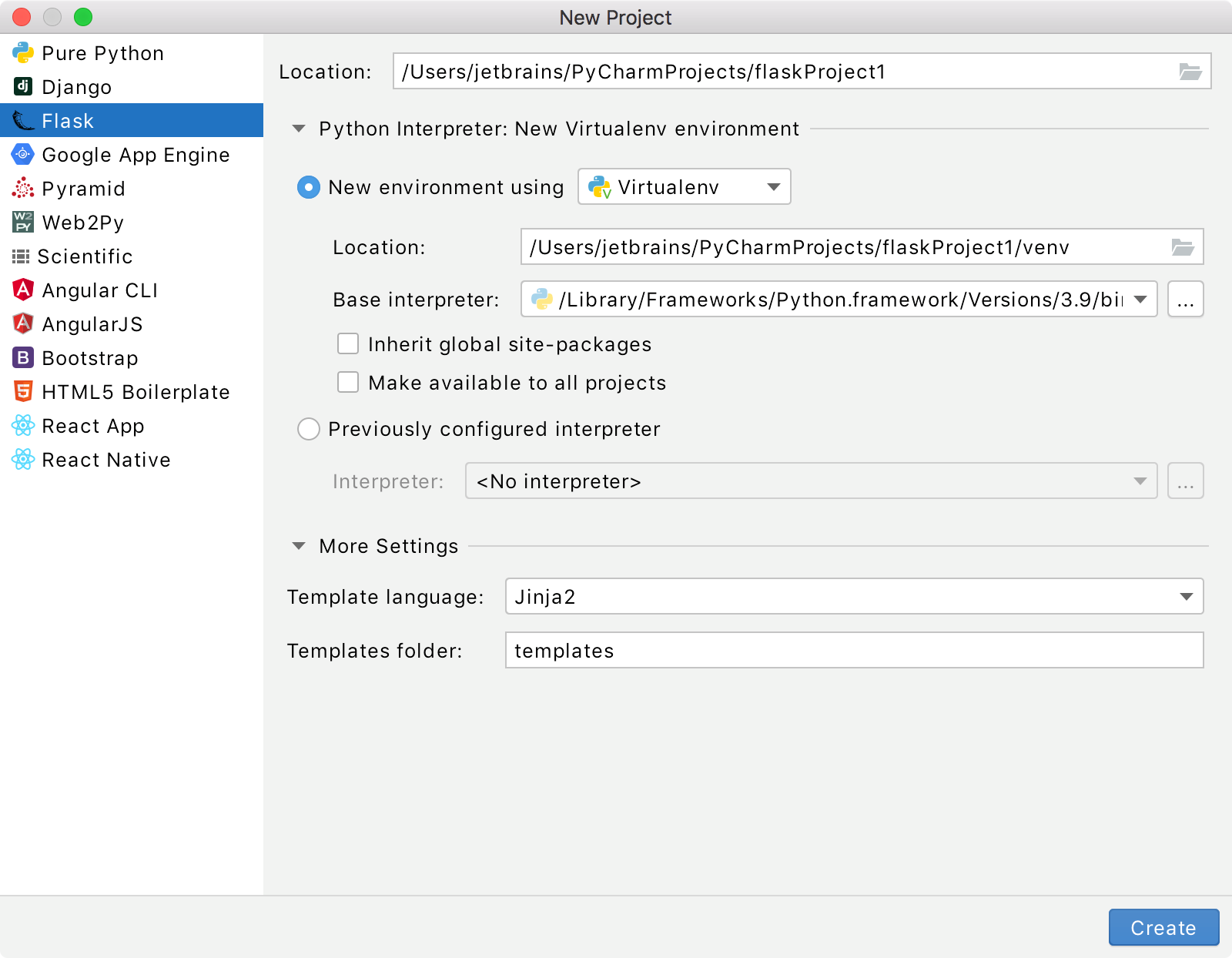
In the New Project dialog, do the following:
Specify project type Flask.
Specify project location.
Next, click
to expand the Python Interpreter node, and select the new environment or previously configured interpreter, by clicking the corresponding radio-button.
The following steps depend on your choice:
New environmentPreviously configured interpretercondaVirtualenvPipenvPoetry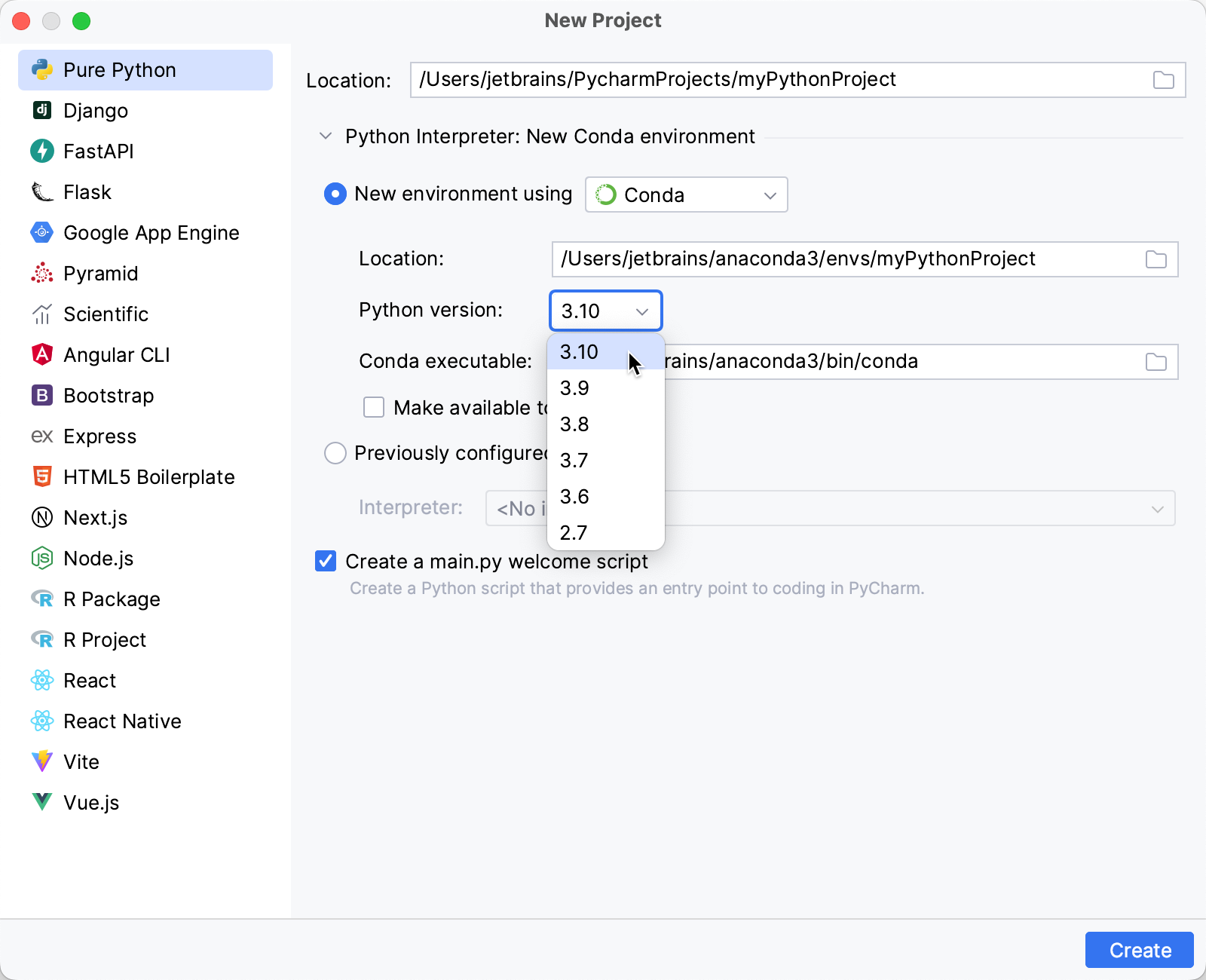
Specify the location of the new conda environment in the Location field, or click
and browse for the desired location in your file system. The directory for the new conda environment should be empty.
Select the Python version from the list.
Normally, PyCharm will detect conda installation.
Otherwise, specify the location of the conda executable, or click
to browse for it.
Select the Make available to all projects checkbox if you want to reuse this environment when creating Python interpreters in PyCharm.
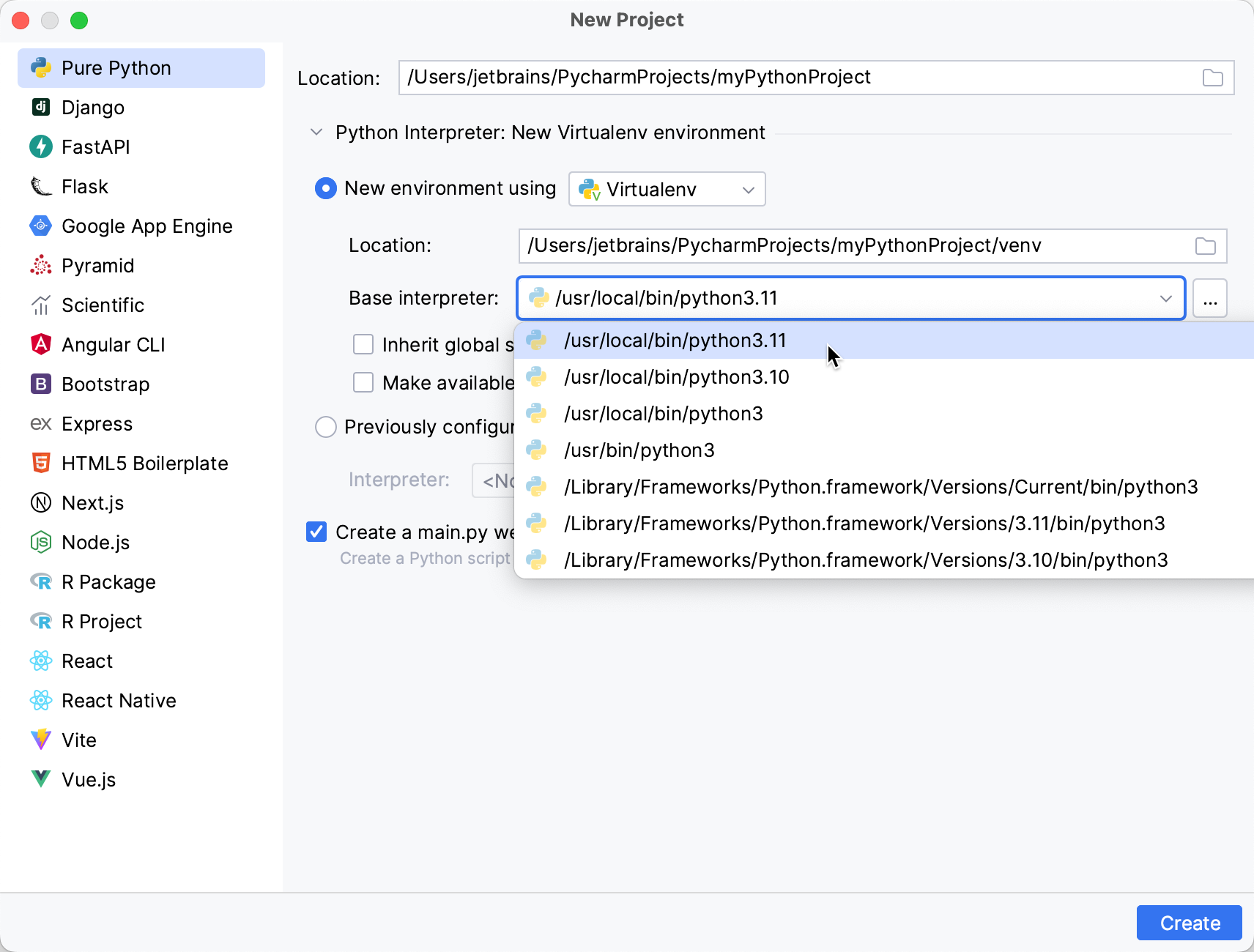
Specify the location of the new virtual environment in the Location field, or click
and browse for the desired location in your file system. The directory for the new virtual environment should be empty.
Choose the base interpreter from the list, or click
and find the desired Python executable in your file system.
Select the Inherit global site-packages checkbox if you want all packages installed in the global Python on your machine to be added to the virtual environment you're going to create. This checkbox corresponds to the
--system-site-packagesoption of the virtualenv tool.Select the Make available to all projects checkbox if you want to reuse this environment when creating Python interpreters in PyCharm.
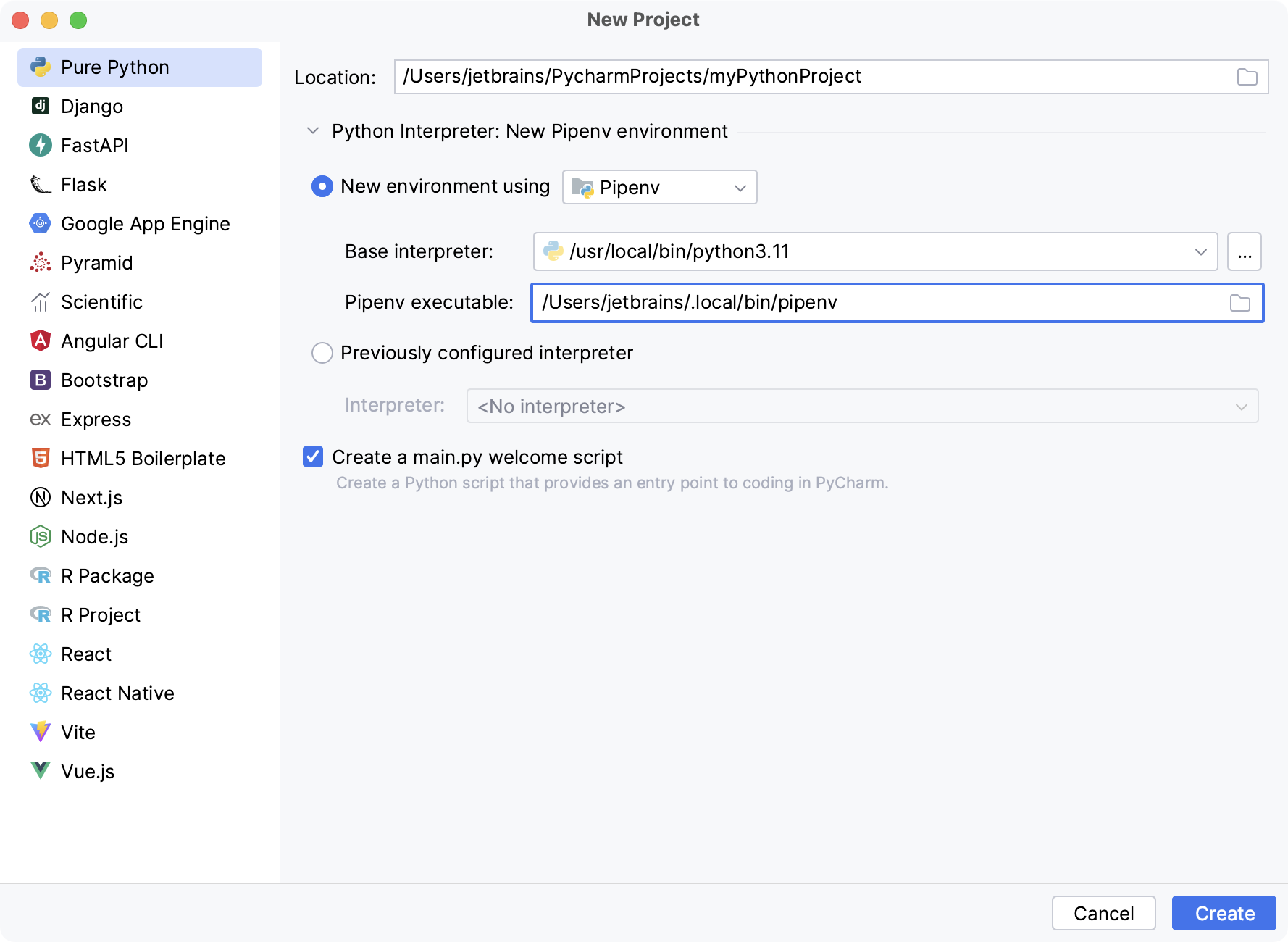
Choose the base interpreter from the list, or click
and find the desired Python executable in your file system.
If you have added the base binary directory to your
PATHenvironmental variable, you don't need to set any additional options: the path to the pipenv executable will be autodetected.If the pipenv executable is not found, follow the pipenv installation procedure to discover the executable path, and then paste it in the Pipenv executable field.
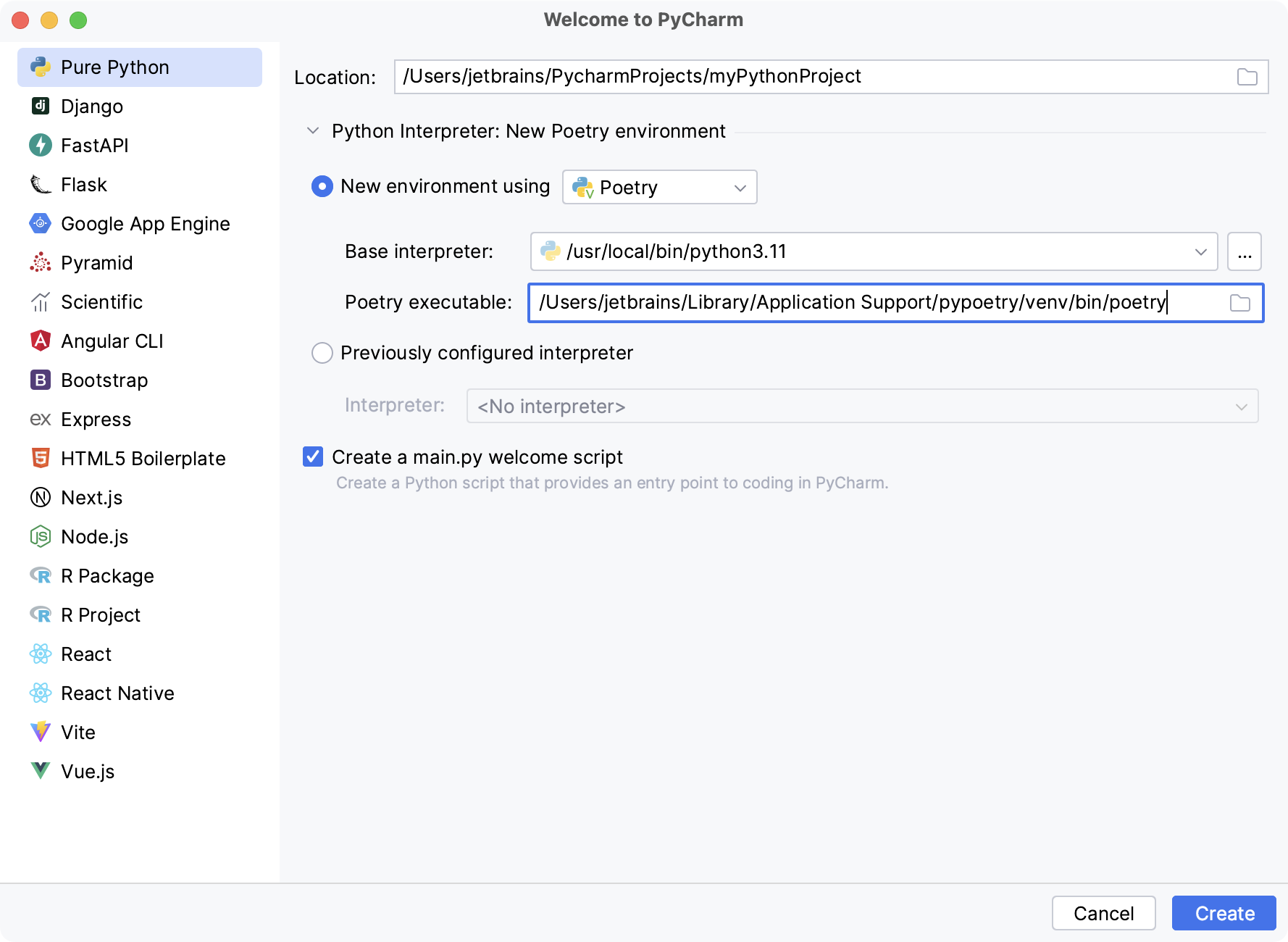
Choose the base interpreter from the list, or click
and find the desired Python executable in your file system.
If PyCharm doesn't detect the poetry executable, specify the following path in the Poetry executable field, replacing
jetbrainswith your username:macOSWindowsLinux/Users/jetbrains/Library/Application Support/pypoetry/venv/bin/poetryC:\Users\jetbrains\AppData\Roaming\pypoetry\venv\Scripts\poetry.exe/home/jetbrains/.local/bin/poetryChoose the desired interpreter from the list, or (if the desired interpreter is not found), click Add Interpreter and configure an existing interpreter as described on the following pages:
Click
(More Settings), and specify the following:
From the Template language list, select the language to be used.
In the Templates folder field, specify the directory where the templates will be stored, and where they will be loaded from. You can specify the name of the directory that doesn't yet exist; in this case, the directory will be created.
Click Create.
PyCharm creates an application and produces specific directory structure, which you can explore in the Project tool window. Besides that, PyCharm creates a stub Python script with the name app.py, which provides a simple "Hello, World!" example.
You can run the created application by pressing Preview the run results.

Note that the application was run with the following Flask specific variables:
FLASK_APP=app.py– Defines an entry point of the Flask application - the target instance of theFlaskclass. When extending your Flask application and adding more modules and files, you might need to pass some non-defaultFLASK_APPvalues. You can pass a module name, a path to the target Python file, or any combination of modules, scripts, andFlaskclass instances, for example,FLASK_APP=access_management.access:app2, where:access_management– the module nameaccess– the target file in the moduleapp2– theFlaskclass instance inaccess.
For more information about the
FLASK_APPvariable, refer to Flask CLI documentation.FLASK_ENV=development– Sets one of possible environments.FLASK_DEBUG=0– Controls the built-in Flask debug mode. With this mode enabledFLASK_DEBUG=1, the development server will be automatically reloaded on any code change enabling continuous debugging. For more information about Flask debugger, refer to Flask Debug Mode.
You can change Flask specific variables by editing the corresponding parameters of the Flask Server Run/Debug configuration.
When you've enabled Flask support in your project, the Python console starts acting as a Flask console. Use code completion to enter and execute Flask-specific commands.
